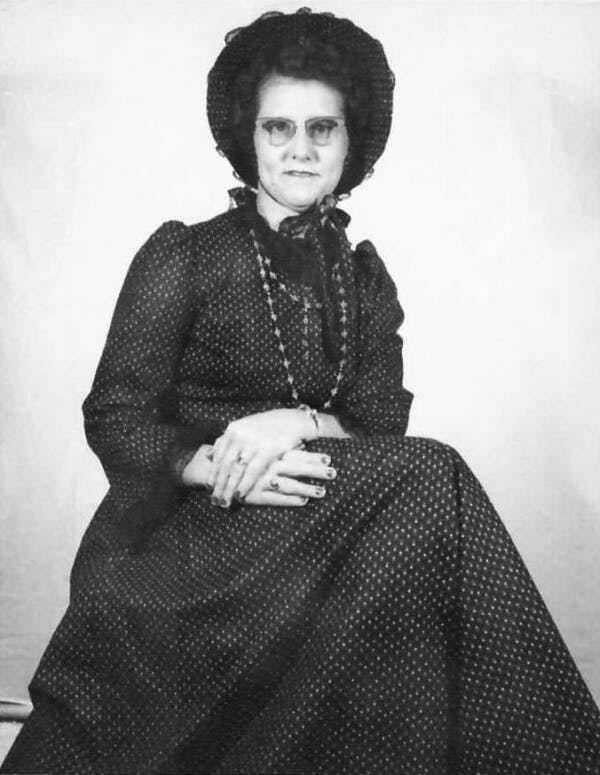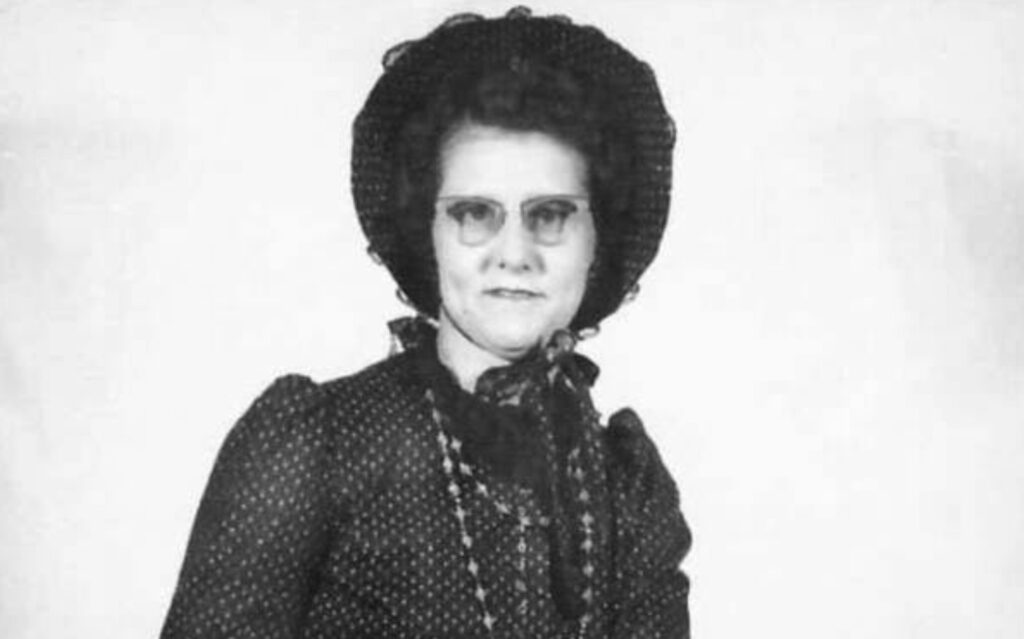Helen Viola Jackson: The Final Civil War Widow
When Helen Viola Jackson passed away in December 2020 at age 101, it marked the end of an era. She was the last known surviving widow of a Civil War veteran, dying over 155 years after the war concluded. Her quiet marriage to 93-year-old James Bolin in 1936 connected her to one of America’s bloodiest conflicts even into the modern day. Helen’s incredible life story illustrates the surprising legacies that can persist through time.


A Teenage Bride
Helen was born in 1919 and raised on a small farm in Missouri along with 9 siblings. She first met her future husband, James Bolin, at church in the early 1930s. Bolin was a Civil War veteran in his 90s who had served as a private in the Union Army.
After her father volunteered Helen, then 17, to assist the widower Bolin with household chores, the elder man soon proposed. As Helen later recalled, Bolin offered a pragmatic reason, saying: “He said that he would leave me his Union pension. It was during the depression and times were hard. He said that it might be my only way of leaving the farm.”
On September 4, 1936, Helen and James married in an intimate ceremony at his home. Despite the 76-year age gap, Helen held her husband in high regard: “Mr. Bolin really cared for me. He wanted me to have a future and he was so kind.” Though technically wed, Helen continued using her maiden name and residing with her parents – an unconventional union even then.
Secret Marriage Lasts 3 Years
Keenly aware of wagging tongues, Helen guarded her marriage’s privacy for decades. As she stated in one interview: “I had great respect for Mr. Bolin, and I did not want him to be hurt by the scorn of wagging tongues.” Helen also feared damage to her own reputation as a young woman apparently marrying solely for financial reasons.
So she hid the marriage nearly all her life, telling only a few witnesses who attended the wedding. James Bolin passed away in 1939 after 3 years of technically being Helen’s husband. Even into old age, she never claimed his promised pension, denying rumors she exploited an elderly man. For over 75 years, Helen’s brief marriage remained a closely held secret only revealed privately near her death.
20th Century Unions Between Teens and Veterans
Helen’s union, though unique, was not the only marriage between a young woman and aged veteran in the early 20th century. Economic instability often motivated teen brides and aging grooms to wed. Three other teen brides also became Civil War widows by marrying octogenarians:
- Maudie Hopkins, 19, married 86-year-old Confederate veteran William Cantrell in 1934
- Alberta Martin, 21, married 81-year-old Confederate soldier William Jasper Martin in 1927
- Gertrude Janeway, 17, married 81-year-old Union veteran John Janeway in 1934
Like Helen, these women tied their lives to aging Civil War veterans in the 1930s. Passage of time ultimately connected them all to the 19th century conflict through their husbands. These May-December marriages became a path to financial security in trying times.
No Pension Despite Widow Status
Though Helen was legally Bolin’s widow, she never capitalized on the promised military pension after his passing. One of Bolin’s daughters threatened to tarnish Helen’s reputation if she pursued the pension. In Helen’s own words: “All a woman had in 1939 was her reputation. I didn’t want them all to think that I was a young woman who had married an old man to take advantage of him.”
So despite being low on money, Helen refrained from applying as a matter of principle. For decades, she even hid the marriage itself to avoid gossip. Only in her late 90s did Helen privately confirm her role as James Bolin’s widow, showing both the stigma she felt and personal nature of her story.
Embracing Her Place in History
In the final years of her life, Helen increasingly embraced her unique position in history. While she still valued privacy, Helen allowed her marriage to James Bolin to be verified by Civil War heritage associations. She gifted Bolin’s engraved Bible, which recorded their union, to a museum exhibit.
Helen also welcomed letters and cards from well-wishers, a contrast to her prior discreet nature. She enjoyed recognition from local Missouri organizations highlighting her special status as the last person still directly connected to the Civil War. For Helen, separating fact from fiction regarding her marriage became important only late in life.
National Cemetery in Springfield, MO, in November 2018
Passing of a Private Figure
The rediscovery of Helen’s role as the final Civil War widow sheds light on a woman who purposely avoided the limelight most of her life. Helen preferred keeping her notable marriage closely guarded rather than risk gossip. That someone with such a singular place in history valued privacy first speaks volumes about her character.
In her final years, Helen allowed her story to be shared on her own terms. She demonstrated that even an event as profound as the Civil War could still touch the lives of individuals over a century later. Though Helen has passed, her principles and resilience will remain inspiring.
Remembering the Civil War’s Human Impact
The American Civil War ended over 155 years ago, yet Helen’s life demonstrated how wars continue impacting people long after the final battles conclude. The war’s legacy rippled into the 20th century through Helen’s marriage to James Bolin, reminding us of the Civil War’s immense human toll.
Other individuals further exemplify the war’s lasting effects. Irene Triplett, who died in 2020, was the final person still receiving a Civil War pension as the child of a veteran. And in 1959, the last verified widower of a Revolutionary War bride passed away, underscoring how wars reverberate through generations.
Helen’s passing severs one of our last living links to the Civil War. It represents a symbolic turning point as the world moves further away from a defining 19th century conflict. Helen’s choice to finally share her remarkable story provides insight into a war that still touches America today.
The Ripple Effects of War
Wars reshape societies and change individual lives irrevocably. The Civil War brought immense loss and upheaval, emancipating enslaved people but also leaving over 600,000 dead. Widows like Helen dealt with the war’s consequences rippling into peacetime.
Figures like the last soldier, widow or child allow us to measure wars’ longevity. Today, the final World War I veterans have passed. But other survivors maintain connections, reminding us of how political events transform human stories. Helen’s marriage to James connected her to seismic 19th century events late into the modern era.
By binding her life to Civil War history, Helen provided a tangible link between the past and present. Her passing represents both the war’s fading from living memory and how its legacies still reach into the nation’s future. Remembering figures like Helen helps humanity reflect on the true costs of war.
The Search for Financial Security
What motivated Helen’s unusual marriage to the nonagenarian Bolin? Though barely more than a child herself, the Great Depression left Helen struggling to support her future. Marrying the older widower offered potential escape through a military pension if Helen cared for him until his death.
Other teen brides like Helen faced similar hardships and saw marriage to elderly veterans as a path to financial security. Though not based on romance, these unions allowed women to survive challenging circumstances while providing comfort to aging vets.
Helen maintained affection and respect for her husband despite their age gap. Her pragmatic decision provided a lifeline in desperate times, even if unconventional. The marriage attests to the extreme actions that widespread hardship forced upon youth like Helen.
Lasting Legacies of Teen Brides By marrying aged veterans, Helen and her counterparts gained means for survival. They also became the last living bridges between the 19th and 21st centuries. Though most endured gossip rather than fame, these women passed quietly into history after World War II.
Helen’s secret marriage left her identity as the final Civil War widow hidden until her dying days. But other teenage brides from the era likewise connected our modern times to the 1800s by the barest threads. Their incredible longevity serves as a reminder of war’s lingering trauma.
Through her marriage to a nonagenarian Civil War veteran, Helen inextricably tied her life to one of America’s bloodiest conflicts. By revealing her remarkable story, she demonstrated war’s ability to transcend lifetimes and touch even future generations. Though Helen has passed, her legacy persists as a symbol of war’s human impacts over time.
620,000
This is an accepted number of how many people lost their lives during the Civil War including over 360,000 Union soldiers and over 260,000 Confederate soldiers.
360,000
Approximately 360,000 Union Army widows were granted pensions by the US Government.

